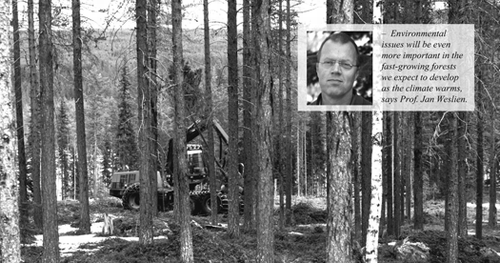
Effects of warming on Scandinavian forests
Increased runoff, less dead wood and higher carbon sequestration
Anticipated climatic warming, along with increased use of genetically improved material, will likely lead to increased timber production, shorter optimal rotations and larger annual cuts in the Nordic forests, says Prof. Jan Weslien. These changes may also have effects on the environment–some probably adverse.
An attempt to forecast the combined environmental effects has been made in a joint-Nordic project, sponsored by SNS. Likely changes in carbon sequestration, water quality and biodiversity were explored with the aid of models developed in Sweden, Finland and Iceland. The models were applied for a case with a landscape dominated with spruce in central Sweden.
With increased temperatures and the use of improved plant material, several important changes in the forest landscape were predicted:
-
Carbon sequestration will likely increase with increases in productivity. However, decomposition rates will also probably increase, partly balancing the higher uptake of the more rapidly growing forest.
-
Losses of dissolved total nitrogen in water runoff will not be significantly affected by the shorter rotations, but the increases in temperature and precipitation (along with shorter frost-free periods) will cause them to almost double. With shorter rotations episodes of nitrogen loading will occur more often, but they will be shorter, and the peaks will be lower.
-
The amount of coarse woody debris, which was used as an indicator of biodiversity, is predicted to decrease, due to shorter rotations, younger trees, less natural mortality and increased rates of decomposition.
–The results indicate that environmental concerns will become even more important in the high- production forests we expect to develop as the climate warms, says Professor Jan Weslien, who led the research project.
Jan Weslien highlights the importance of taking several aspects into consideration when future climates are modelled, even though in many studies only one aspect is modelled.
– Although a pilot-study approach was adopted in this study, it shows the strength of combining the competence and resources of several Nordic research organisations, he says. The results will be published in the scientific literature. A final report can be downloaded from the SNS website.
Project: SNS-102, Environmental effects of shorter forest rotation in a landscape perspective.
Partners: Jan Weslien, Skogforsk, Sweden (project leader): Thomas Ranius, SLU, Sweden; Leena Finér, Harri Koivusalo and Ari Laurén, Metla, Finland; Jon A. Jonsson and Bjarni D. Sigurdsson, Agric. Univ. of Iceland.

About the models
The modelling was based on three climate scenarios, established by the IPCC:
-
Current climate
-
B2–a temperature increase of 3.7°C and a month longer growing period
-
A2–a temperature increase of 4.7°C and two months longer growing period.
-
Forest production: ProdMod (from SLU and Skogforsk), and Motti (from Metla)
-
Water runoff: FEMMA (a nitrogen load model from Metla)
-
Carbon sequestration and soil organic decomposition models: CO2-fix and YASSO
-
Dead wood: CWD (a model of decomposition and mortality, from SLU)
Metla and SNS move out of Helsinki
In July 2008 the Finnish Forest Research Institute (Metla) will close its office in the Forest House (Metsätalo) at Unionsgatan 40 A in the centre of Helsinki. This is a historic move, since no forest organisations will then be based in the building, which will be entirely taken over by Helsinki University.
The building was constructed in 1939 for the education of university-level forest students and to house the forest research institute. The central forest library was also located there. Now the forest students study at the University campus in Viikki.
Metla will aggregate all of its research facilities and activities in the Helsinki region at Vantaa by July 2008. The move also has implications for the SNS secretariat (Chairman Kari Mielikäinen and secretary Sune Haga), who will be stationed in Vantaa from the 7th of July, 2008. The address will be SNS/Metla, BOX 18, 01301 VANTAA and the visitor's address will be Ånäsgränden 1 (Jokiniemenkuja 1). / Sune Haga
Shortcuts
Global seed store on Svalbard
A “central bank for seeds” has been installed on Svalbard. On the opening day, 100 million seeds from over 100 countries were received. The seed store has been built 130 metres inside an arctic mountain with permafrost. The temperature in the store is sufficiently low (a constant −18°C) to maintain the germinability of some species, such as wheat and sorghum, at high levels for hundreds of years.
The global seed store is administered by NordGen (the Nordic Genetic Resource Centre)
Read more at www.nordgen.org
New strategy for Danish forest research
The Danish institute Skov & Landskab has launched a new strategy for 2008–2011. Among other things, a number of strategic fields of research have been identified, such as adaptation to climate change; management of water resources; sustainable primary production of bioenergy; structure and function of biomass; the role of nature and recreation for health and welfare; forest management procedures that resemble natural processes; “good governance” in physical planning; rural development and the role of trees in anti- poverty programmes.
Source: www.sl.life.ku.dk
Stumps an under-exploited resource
Stumps contain more than 20% of all biomass of coniferous trees, say representatives of the Swedish University of Agricultural Sciences, which is planning to invest in an intensive investigation of the status of stumps in Swedish forests, and both the pros and cons of extracting them.
Source:
www.nordicforestry.org

Research forests under new management
Metla (the Finnish Forest Research Institute) is slimlining its organisation. The 86,000 hectares of forests used by the research institute have been handed over to the state-run forest organisation Forststyrelsen.However, Metla will still be able to use the forests for research under an agreement with Forststyrelsen.
Source: www.metla.fi
Afforestation will change the Nordic landscape
Afforestation of previously non-forest land will influence the whole ecosystem, the local communities and the landscape. Its consequences have now been examined in a joint Nordic project.
In historical times, extensive areas in the southern and western parts of the Nordic region were deforested, and subsequently afforested in the past two centuries. Afforestation, in which forest is established on previously non-forested land, is therefore an important activity in the relatively lightly forested Nordic regions, such as Iceland, the Faroe Islands, parts of Denmark and western Norway. In such places, the conversion of previously unused land or agricultural fields will influence the whole ecosystem, the local communities and the landscape.
Nordic project
The joint-Nordic AFFORNORD project has extensively examined the consequences of afforestation. The aim of the project was to obtain a general overview of the effects of afforestation on ecosystems, landscapes and rural communities by studying the relevant literature, linking current Nordic projects in the field, and establishing common field studies in key areas. The results are summarised in a book in the Tema Nord series.
The most important conclusions are, briefly:The effects of afforestation on biodiversity vary depending on the functional groups considered, the planning and the management regime. While the biodiversity of some groups of organisms is adversely affected by afforestation (e.g. vegetation), others may become more diverse (e.g. fungi).The effects of afforestation on landscape have been neglected and little research has been done in the field. However, afforestation strongly affects landscapes, and it is important to consider the landscape in afforestation planning.
-
A forest is an ideal option for offering diverse experience of nature and recharging people's mental and physical batteries, since there is a positive relationship between human experience of nature and health.
-
It is not viable to generalize about the overall effects of afforestation on rural development in the Nordic countries, since the effects differ from case to case, depending on local social and economic factors.
-
Afforestation reduces atmospheric CO2 by net carbon storage in biomass and soils.
-
However, the degree to which the sequestration potential at a given site is exploited will depend on the tree species used and the management regimes.
Contact: Edda S. Oddsdottir ([email protected])
The AFFORNORD project arranged an international conjerence on the theme in Iceland 2005. The proceedings from the conference have now been published in the Tema Nord series, entitled: Effects of afforestation on Ecosystems, Landscape and Rural Development. Proceedings of the AFFORNORD conference, Reykholt Iceland. June 18–22, 2005. The book can be ordered and is available as a pdf file from the Nordic Council of Ministers website (
www.norden.org
) under Publications.
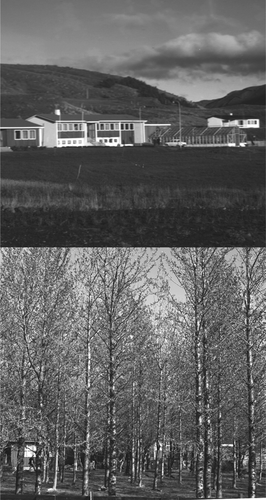 Afforestation will clearly ajfect the landscape. The upper picture from Iceland is from 1970 (photographer unknown). The lower is of the same place 38 years later. Photo Edda oddsdottir
Afforestation will clearly ajfect the landscape. The upper picture from Iceland is from 1970 (photographer unknown). The lower is of the same place 38 years later. Photo Edda oddsdottir

Why Nordic cooperation?
SNS stands for Nordic cooperation. But why is Nordic cooperation important? We asked some members of the SNS board.
 Niels Elers Koch
Niels Elers Koch
Board member from Denmark. Professor and Director General of Forest & Landscape Denmark, Vice President of IUFRO.
“There are increasing demands for the multitude of goods and services provided by the forest, and at the same time the research and development problems in the forest sector are becoming increasingly complex. The need for a strong, effective SNS has therefore never been so great, because the forests are “the green gold of the Nordic countries”. Since we share the same cultural background, the same ecosystems and the same challenges, Nordic cooperation and division of work creates a lot of synergy at the Nordic level.”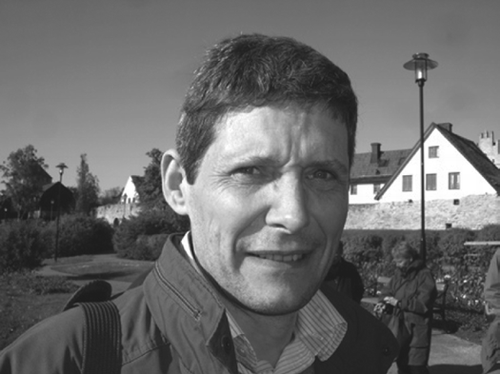 Trondur Leivsson
Trondur Leivsson
Board observer from the Faroe IslandsSkogrokt Landsins
“Small regions find it difficult to make their voices heard in the EU, but they still may provide expertise and experience of great value to the international community. The Faroe Islands offer extreme conditions for testing trees and bushes in a harsh climate. The experience gained can be used both by us [Faroe Islanders] and people in other countries who wish to extend their knowledge. The cooperation within the Nordic region is generally very smooth, since we share many common values, and it enables us to communicate the results to a wider audience.”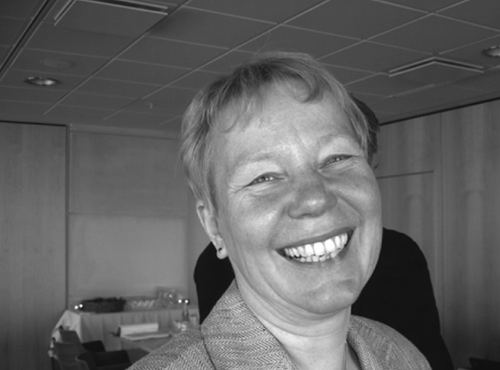 Liisa Saarenmaa
Liisa Saarenmaa
Board member from Finland.
Senior adviser to the Finnish Ministry of Agriculture and Forestry
“The forest industry is an extremely important sector in the Nordic countries, while it is a minor branch in many other European countries. Our challenge is to raise the priority of forestry issues on the EU agenda, both as an industrial sector and as a means to meet the challenges of global warming. The individual countries cannot do this, since we are easily brushed aside by the big players like France and Great Britain. However, we can become a stronger force if we speak with a common voice. Therefore, Nordic cooperation is very important.”
New SNS project: Will climate change exacerbate insect damage?
Spruce bark beetles will likely develop more generations per year as a result of climate warming.
In Norway and Sweden there is just one generation of spruce bark beetle per year, but researchers believe that there may soon be two per year (as there often are in Denmark). With further global warming even three generations may appear
In a new SNS-supported project, researchers will learn more about the timing of swarming and development of this beetle. The data acquired will be used to develop models for assessing the probable effects of rising temperatures on the beetle's populations.
Most of the work will be cooperatively performed in 2008 by staff at five organisations in Denmark, Sweden and Norway. The coordinator is Anna Maria Jönsson of the University of Lund, Sweden.
SNS project 2008-105. 45,000 [euro].
Contact: [email protected]
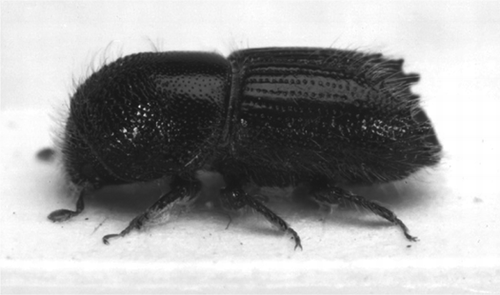 The spruce bark beetle (Ips typographus) is already a major threat to spruce forests in Scandinavia. In a warmer climate, it may develop three generations in a year, compared to one today!
The spruce bark beetle (Ips typographus) is already a major threat to spruce forests in Scandinavia. In a warmer climate, it may develop three generations in a year, compared to one today!
Photo: Skogforsk
New network collects information on phenology
In March 2008, a new Swedish phenological website was launched.
On the website, the public can report signs of spring, such as the blossoming of Anemone nemorosa or the leafing out of trees. Just two weeks later more than 250 people had reported phenological observations.
Finland has systematically collected phenological data for ten years, Norway even longer. Sweden has only collected scattered observations, but some old phenological records are available.
– If the old Swedish records are compared with the new data we are collecting, I expect we will be able draw conclusions about the effects of climate change on phenological events, says Ola Langvall, chief of the SLU research station at Asa in Sweden.Contact: [email protected]
Website:
www.hlommar.nu
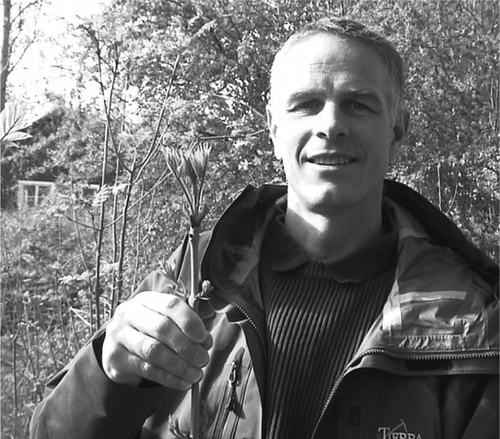
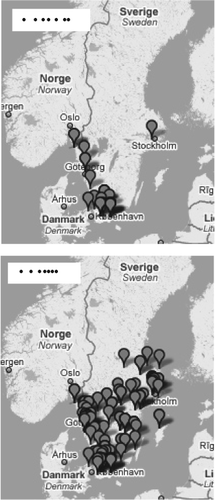 The website's designers have striven to produce a user-friendly interface. The reader can easily obtain graphical displays of the advance of a phenological event. These maps show reported sites of blossoming Anemone nemorosa on March 4 and April 4 2008.
The website's designers have striven to produce a user-friendly interface. The reader can easily obtain graphical displays of the advance of a phenological event. These maps show reported sites of blossoming Anemone nemorosa on March 4 and April 4 2008.
Time to apply for SNS research funds
Now is the time to apply for SNS funds for 2009. The closing date will be the 1st of September 2008
Applications should be related to one of the five SNS target areas:
-
Sustainable utilisation of wood resources for generating energy and substitutes for fossil fuels
-
The effects of climate change and weather on the forests and forest sector
-
Wood material science and increased utilisation of wood products
-
The economic and social value of forests in tomorrow's society
-
Biodiversity and natural values of forests
SNS accentuates equality between men and women in the applications.
Successful applicants typically receive about 30,000–50,000 [euro] per year for SNS-projects and 10,000–25,000 [euro] for networks. Applicants also need to provide 67% of the funds from their “own” sources for SNS-projects and 50% for networks.
/ Sune Haga
More information and application documents can be obtained at http://www.nordicforestresearch.org
Contact News & Views
Write to the scientific editor: Mats Hannerz, Silvinformation AB [email protected]
More info about SNS:
We strongly encourage our readers to contribute to a lively and interesting journal. Letters to the News & Views section will be published if they are:
-
short
-
relevant to the Journal
-
interesting for the readers.
News & Views is edited by
Mats Hannerz, Silvinformation AB
and produced by
Carl Henrik Palmér, [email protected]